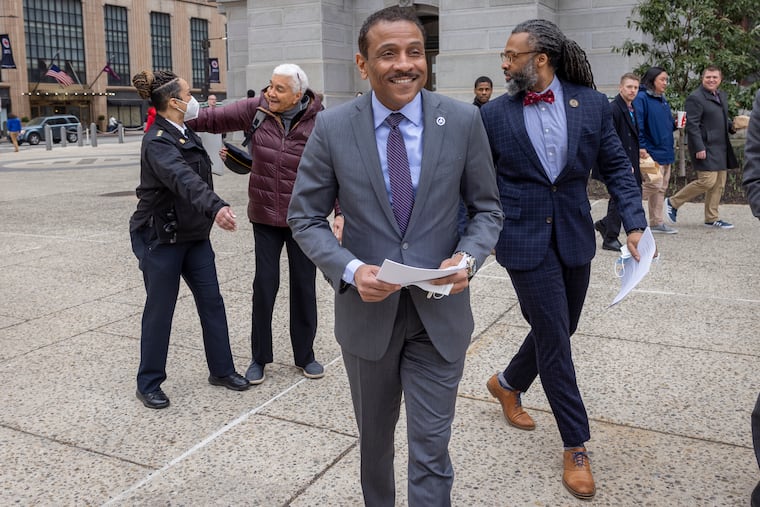Investigation underway over asbestos issues as Philly schools superintendent warns more discoveries are likely
“In the coming weeks and months, we anticipate more damaged asbestos will be identified," Superintendent Tony B. Watlington Sr. said in an email to staff.

Officials knew about damaged asbestos at one city school for at least two years but did nothing about it — conditions eventually deemed so problematic it forced the closure of the building. Now, the Philadelphia School District’s inspector general is investigating.
The investigation centers on environmental conditions at Building 21, a district school in West Oak Lane that was shut March 1 after a routine inspection showed the damaged asbestos, and Superintendent Tony B. Watlington Sr. later said officials apparently knew about the problem for at least two years.
District employees conducting a review of records in preparation for federally mandated inspections “confirmed gaps in the district’s historic recordkeeping,” Watlington wrote in an email sent to district staff Tuesday and obtained by The Inquirer. “I met with Inspector General [Jamie] Naberezny, who will investigate the Building 21 situation. I and my staff will comply with any information requests. And we will hold ourselves accountable for lapses in timely responses.”
» READ MORE: Philly schools knew of damaged asbestos at Building 21 for at least two years before closure
Watlington became superintendent in June; the lapses occurred prior to his administration. William R. Hite Jr. is the former superintendent.
Watlington said that although the district has improved its focus and spent more money on asbestos inspections since the 2019-20 school year, when a dozen schools were closed for asbestos issues, “in the coming weeks and months, we anticipate more damaged asbestos will be identified. This is not an indication of a program failure, but the contrary — a program that is working to protect health and safety through the identification and management of environmental concerns.”
The school system has nearly 300 buildings, the vast majority of which were constructed when asbestos was a common building material in floor tiles and pipe insulation, as well as some paint and cement products. Undamaged asbestos is not dangerous; when it becomes damaged, it can release potentially toxic fibers into the air.
Federal law mandates asbestos inspections every three years, with six-month check-ins required when damaged materials are discovered.
Most inspections in the current cycle have been completed, Watlington said: 229 are finished, seven are in progress, and 59 remain “at some of our oldest and largest facilities,” the superintendent wrote. “Once completed in the coming months, we will have a more comprehensive record of each building’s asbestos conditions from which to be able to monitor changes over time. And the cycle of three-year inspections will begin anew.”
To date this school year, Building 21 and another facility — Mastery Charter Simon Gratz High School, a charter operating in a district building — have closed because of asbestos. Gratz has reopened; Building 21 is still closed, with most students learning virtually and some completing assignments at Strawberry Mansion High School.
Watlington underscored the district’s historic underfunding and ongoing financial and staffing challenges, as well as the fact that Philadelphia’s school board is alone in the commonwealth as completely dependent on other entities for its ability to raise funding.
“The district can’t do this work alone,” Watlington said. He noted the $100 million promised by the University of Pennsylvania to put toward environmental work, and the $325 million in stimulus money dedicated to the same cause.
But, Watlington said, “the needs are vast. ... This is a moment that demands sustained investment in our schools and collaboration among district, civic, political and business leaders. It requires all of us to work toward our shared goal of creating and maintaining healthy, safe educational environments for all our students and staff.”
Tensions between the city and district are running high, particularly over facilities. The district has sued the city over a new law designed to give the city more oversight around environmental conditions, and some City Council members have threatened withholding their votes to authorize the district’s funding if a buildings plan is not developed quickly. Watlington has paused his buildings plan until an academic strategic plan is near completion.